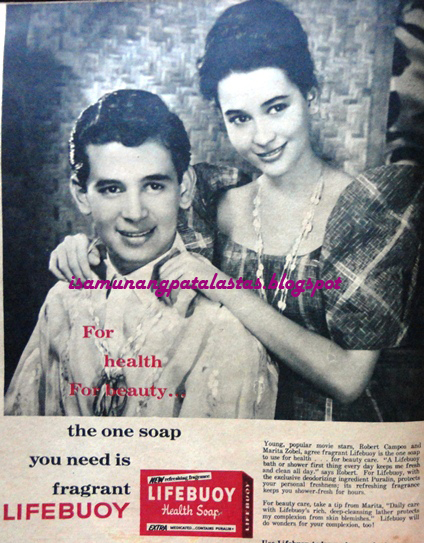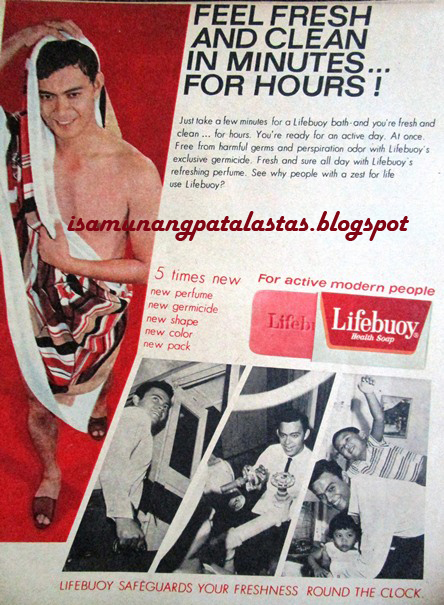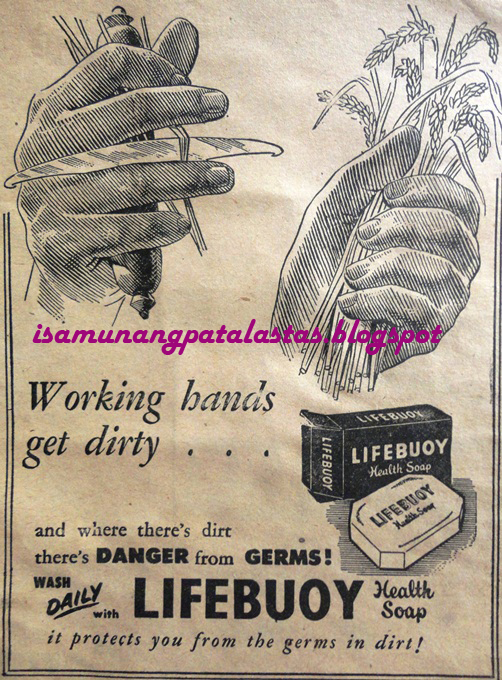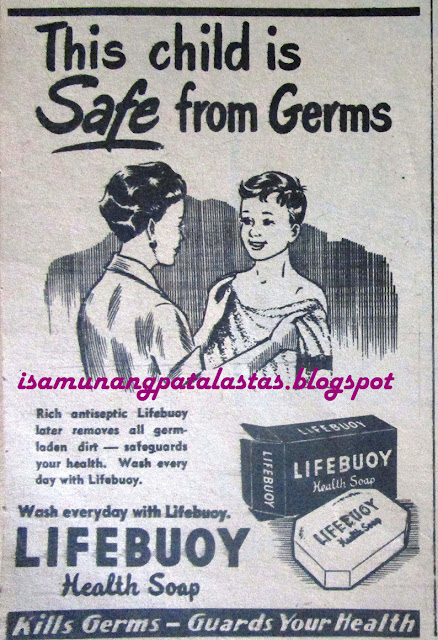 |
| EARLY 1936 PHILIPPINE AD, LIFEBUOY HEALTH SOAP & SHAVING CREAM. |
LIFEBUOY Health
Soap has a long history in the
Philippines, available here in the Philippines since the Commonwealth years.
Originally introduced by the Lever Bros. in England in 1895, it made a splash in
America, becoming one of the country’s most popular soaps from 1923 to the
1950s.
The first LIFEBUOY
Soaps in the country were imported from the U.S. by Smith, Bell & Co.Ltd. in
the 1930s. The soaps—which were phenol-based carbolic soaps—were advertised on
a “health” platform as the mediciney-smelling soap had germ-fighting qualities.
The Philippine Refining Company (PRC, founded 1916,
incorporated 1927) became the manufacturers and marketers of Lever Brothers
products when the company ventured into bath and beauty soaps. The first soap
product introduced was LUX in 1950. By
1951, LIFEBUOY was the best selling health
soap in North America , prompting PRC to launch the soap here that same year.
The first illustrated, locally-made ads came out in 1953,
touting the germicidal properties of the soap. The octagonal shaped LIFEBUOY came in red and yellow packaging.
Sometime in 1951 or 1952, Lever Bros. experimented with adding perfumes
to the soap, and made the changes permanent in 1954. Thus LIFEBUOY was repositioned as both a health and beauty soap. It is
credited for popularizing the term “B.O.”for ‘body odor’ in it advertising.
Advertisements from 1955, featured the coral-colored LIFEBUOY Soap endorsed by local showbiz
love teams as a family soap. The ads made mentioned of LIFEBUOY’s exclusive
purifying ingredient—Puralin—which keeps body safe from sweat and perspiration.
The same ingredient also clears skin of blemishes. The first romantic pair
featured were Marlene Dauden and Tony Marzan.
The use of the country's leading love teams turned out to be very successful, as beauty soaps made use of the same celebrity formula for their ads. The no #1 tandem of Nida Blanca and Nestor de
Villa, joined the
LIFEBUOY bandwagon in 1957.
 |
| NIDA BANCA AND NESTOR DE VILLA, FOR LIFEBUOY, 1957 Photo: VIDEO48 |
Sampaguita Pictures was contracted by PRC to provide wholesome romantic pairings to appear in the LIFEBUOY print ads, and they were employed for regular as weall as seasonal promotions,
 |
| NATION'S LEADING LOVE TEAMS, LIFEBUOY ENDORSERS,1957 |
Other leading love
teams of the country who pushed the product in the 50s decades included Amalia
Fuentes and Juancho Gutierrez, Shirley Moreno and Zaldy Zshornack, Maruta Zobel
and Robert Campos, and Lita Gutierrez and Willie Sotelo.
 |
| MARITA ZOBEL AND ROBERT CAMPOS FOR LIFEBUOY SOAP, 1961 |
 |
| SUSAN ROCES AND ROMEO VASQUEZ, FOR LIFEBUOY SOAP, 1960 |
LIFEBUOY surged
in popularity in late 1960s through the
early 1970s, with the introduction of LIFEBUOY
White.
By 1966, LIFEBUOY began modernizing its look, and upgrading its formulation, with its Double Care Action, which protects against skin bacteria, and which gives a longer-lasting feeling of after-bath freshness. This was at a critical time when Procter & Gamble decided to launch its bacterial skin soap, Safeguard, internationally, beginning with the Philippines.
 |
| LIFEBUOY'S DOUBLE-CARE ACTION, for all-day protection, 1966 |
 |
| LIFEBUOY, Double-Care campaign, female version, 1966 |
 |
| AN ATTEMPT TO PRE-EMPT SAFEGUARD'S LAUNCH, Note tagline. 1966 |
SOURCE:
NIDA-NESTOR LIFEBUOY PRIINT AD, courtesy of Video 48.http://video48.blogspot.com/2008/04/terrific-tandem-of-nida-and-nestor.html







No comments:
Post a Comment